Author: Matt Del Fiacco
Malted barley may be the most commonly used grains in brewing, but it’s not the only one. An adjunct that seems to have seen a rise in popularity recently is flaked oats, an unmalted grain used to impart a creamy mouthfeel to beer, which is due to its high beta glucan content. Unlike malted barley, flaked oats have no diastatic power, as the flaking process exposes the starchy endosperm and denatures enzymes, so they can’t be used on their own.
The primary reason most brewers include flaked oats in a recipe is to increase the perceived body and creamy mouthfeel, as the flavor impact is viewed by many as ranging anywhere from subtle to non-existent. However, those seeking a more noticeable contribution have turned to the practice of toasting their flaked oats, which purportedly lends a biscuity cookie-like character to beer.
My experience brewing with flaked oats is quite limited– other than including a decent amount in my Imperial Stout, I’ve only even used it in the occasional NEIPA. While poking around the internet recently, I read of some brewers using flaked oats they toasted on their own to increase the complexity of certain malt-forward styles such as Brown Ale and Porter. Having never brewed with toasted oats, I was inspired by the reports of others and decided to try it out for myself.
| PURPOSE |
To evaluate the differences between a Brown Ale made with toasted flaked oats and one made with flaked oats that were not toasted.
| METHODS |
After consulting with my friend, Sachin “Chino” Darji, who has previously presented on brewing with oats, I settled on a Brown Ale recipe that included a fairly large portion of flaked oats.
A Toast To You
Recipe Details
| Batch Size | Boil Time | IBU | SRM | Est. OG | Est. FG | ABV |
|---|---|---|---|---|---|---|
| 5.2 gal | 60 min | 23.6 IBUs | 21.1 SRM | 1.050 | 1.013 | 4.8 % |
| Actuals | 1.05 | 1.009 | 5.4 % | |||
Fermentables
| Name | Amount | % |
|---|---|---|
| ESB Pale Malt (Gambrinus) | 6.625 lbs | 64.63 |
| Oats, Flaked (Briess) | 2.187 lbs | 21.34 |
| Brown Malt | 9 oz | 5.49 |
| Caramel/Crystal Malt -120L | 9 oz | 5.49 |
| Pale Chocolate Malt | 5 oz | 3.05 |
Hops
| Name | Amount | Time | Use | Form | Alpha % |
|---|---|---|---|---|---|
| Magnum | 10 g | 60 min | First Wort | Pellet | 12 |
| East Kent Goldings (EKG) | 19 g | 15 min | Boil | Pellet | 5 |
Yeast
| Name | Lab | Attenuation | Temperature |
|---|---|---|---|
| Pub (A09) | Imperial Yeast | 72% | 64°F - 70°F |
Notes
| Water profile: Ca 80 | Mg 0 | Na 8 | SO4 104 | Cl 68 |
Download
| Download this recipe's BeerXML file |
I’d read it’s best to give toasted oats time to settle before use, so I prepared 3 weeks before brewing. Relying on Derek Springer’s guide, after pre-heating my oven to 300°F/149°C, I measured out two identical sets of flaked oats, spread one out on a sheet pan, then placed it in the oven.
I returned every 15 minutes to stir the oats and check on their color development, as that would be my indicator as to when they were done. Ultimately, it took 1 hour 45 minutes for the flaked oats to be toasted to my liking, at which point an obvious difference in color was observed.

I placed both sets of oats in separate brown paper bags and left them alone in a cool, dry spot in my kitchen.
Three weeks later, I started my brew day by collecting the full volume of water for each batch, adjusting both to my desired profile, then setting the electric controllers to heat them up.
As the water was heating, I weighed out and milled the grain for each batch.
With the water properly heated, I added the grains, turned the pumps on to recirculate, then checked to make sure both were at my intended mash temperature.
Following each 60 minute mash rest, I removed the grain baskets, let them drain until I collected the proper pre-boil volume, then brought the worts to a boil.
With each 60 minute boil complete, I chilled the worts and racked each to separate fermentation kegs, at which point I took hydrometer measurements showing both hit the same OG.
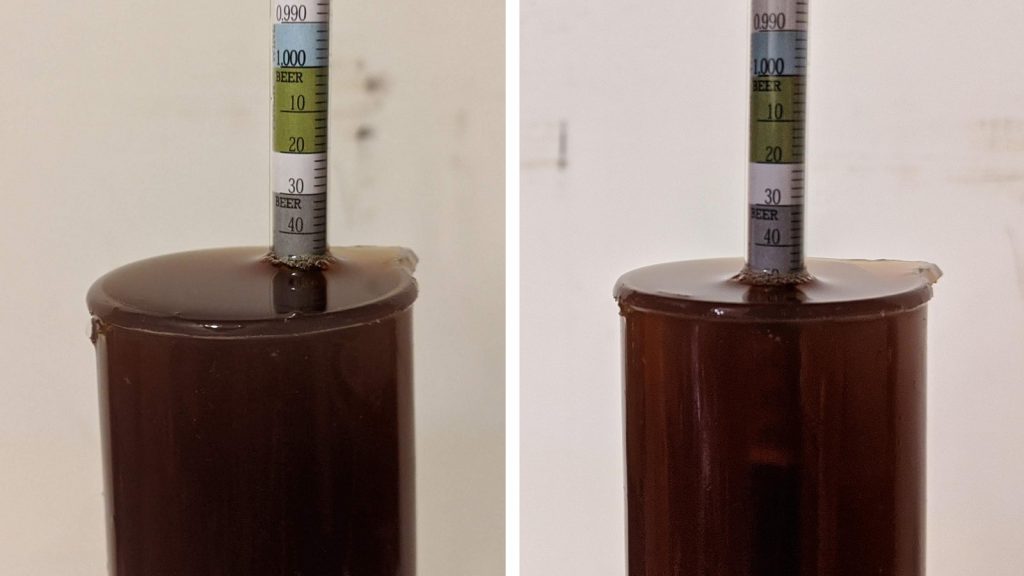
The fermenters were placed in a chamber controlled to my desired 65°F/18°C fermentation temperature and left to finish chilling for a couple hours before I pitched a pouch of Imperial Yeast A09 Pub into each.
The beers were left alone for 2 weeks before I took hydrometer measurements showing both hit the same FG.
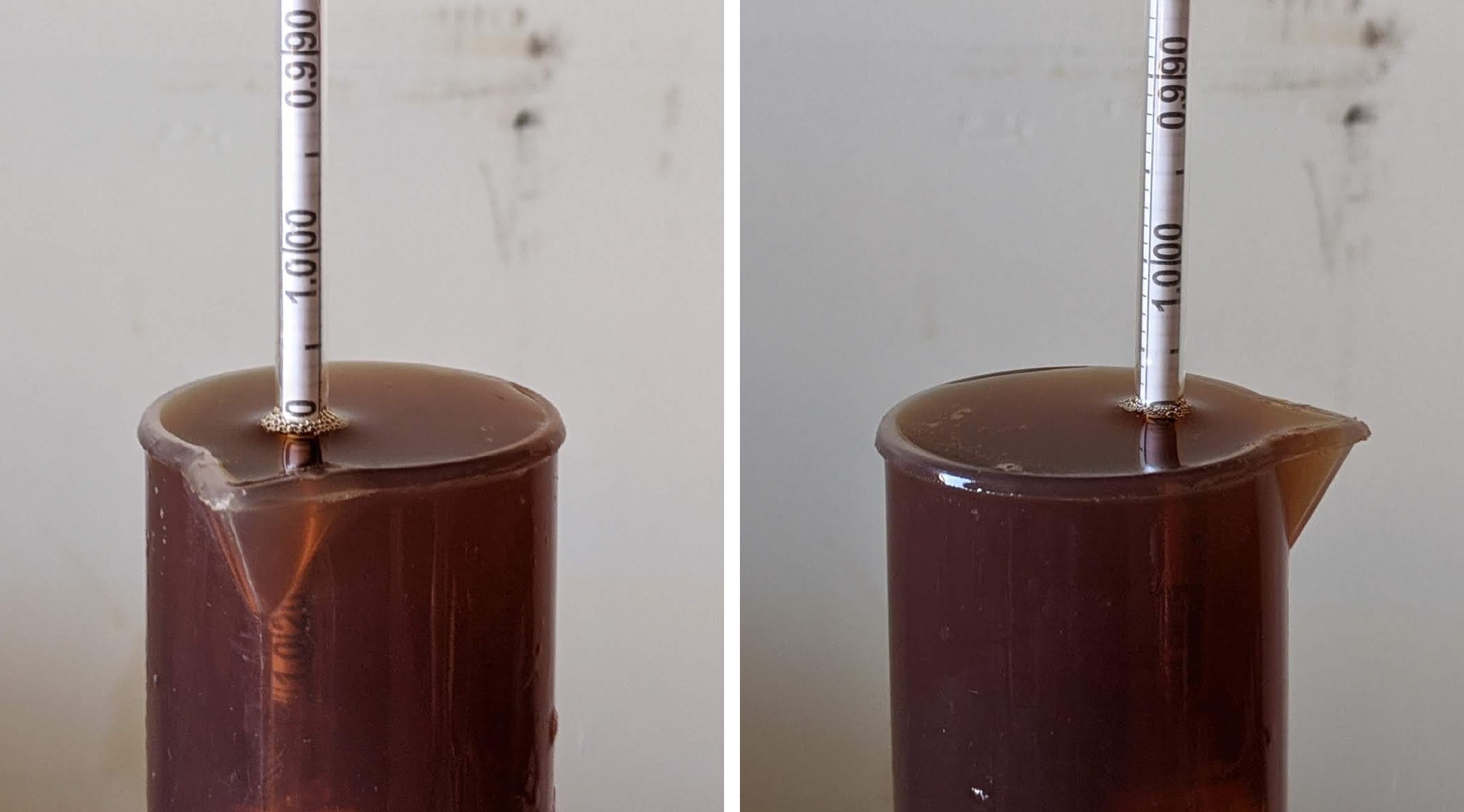
At this point, the beers were pressure transferred to separate sanitized kegs.
The filled kegs were placed on gas in my keezer and allowed to condition a couple weeks before they were ready for evaluation.
| RESULTS |
Due to social distancing practices as a result of the COVID-19 pandemic, data for this xBmt was unable to be collected in our typical manner. As such, temporary adaptations were made involving the author completing multiple semi-blind triangle tests in as unbiased a way as possible.
Utilizing 4 opaque cups of the same color where 2 were inconspicuously marked, one set was filled with the beer made with toasted oats while the other set was filled with the beer made with non-toasted oats. For each triangle test, 3 of the 4 cups were indiscriminately selected, thus randomizing which beer was the unique sample for each trial. Following each attempt, I noted whether I was correct in identifying the unique sample. Out of the 10 semi-blind triangle tests I completed, I needed to identify the unique sample 7 times (p<0.05) in order to reach statistical significance and did exactly that (p=0.02), indicating my ability to reliably distinguish a Brown Ale made with toasted oats from one made with non-toasted oats.
I thoroughly enjoyed both of these Brown Ales, though I had a slight preference for the one made with non-toasted oats, as it came off as a bit cleaner and more drinkable. I felt the version made with toasted oats did have an oatmeal cookie-like character to it that wasn’t at all unpleasant, just not necessarily what I’m looking for in a Brown Ale.
| DISCUSSION |
Flaked oats are most commonly associated with styles like Oatmeal Stout and, more recently, New England IPA, but they’ve been used in a variety of styles over the years. Seeking unique flavor contributions, some brewers have taken to toasting flaked oats before use, which is said to impart stronger nutty, toasty, and even cookie-like characteristics. While anecdotal reports on the impact of toasting oats are all over the board, my ability to reliably distinguish a Brown Ale made home-toasted flaked oats from one made with non-toasted oats suggests it had a perceptible impact.
The Maillard reaction is highly studied and the impact it has on flavor is arguably well established, so it’s not suprising a beer made with toasted oats was perceptibly different than one made with non-toasted oats. While I went into this xBmt expecting the beers to be distinguishable, my inability to identify the unique sample in every trial indicates the impact of toasting flaked oats, at least in the manner I did, wasn’t too extreme.
I’ve not been a huge user of flaked oats in my brewing, though given my experience with these xBmt beers, I’m inspired to see how this grain works in less traditional styles– Oatmeal Lager, anyone? While I had a slight preference for the beer made with non-toasted oats, the toasted oats version was certainly good, I just prefer a bit less complexity in my Brown Ale. I’ve got plans to toast more oats soon for use in my Imperial Stout recipe, as the toasty cookie-like notes will likely pair well with the richness of this style.
If you have any thoughts about this xBmt, please do not hesitate to share in the comments section below!
Support Brülosophy In Style!
All designs are available in various colors and sizes on Amazon!
Follow Brülosophy on:
FACEBOOK | TWITTER | INSTAGRAM
If you enjoy this stuff and feel compelled to support Brulosophy.com, please check out the Support page for details on how you can very easily do so. Thanks!


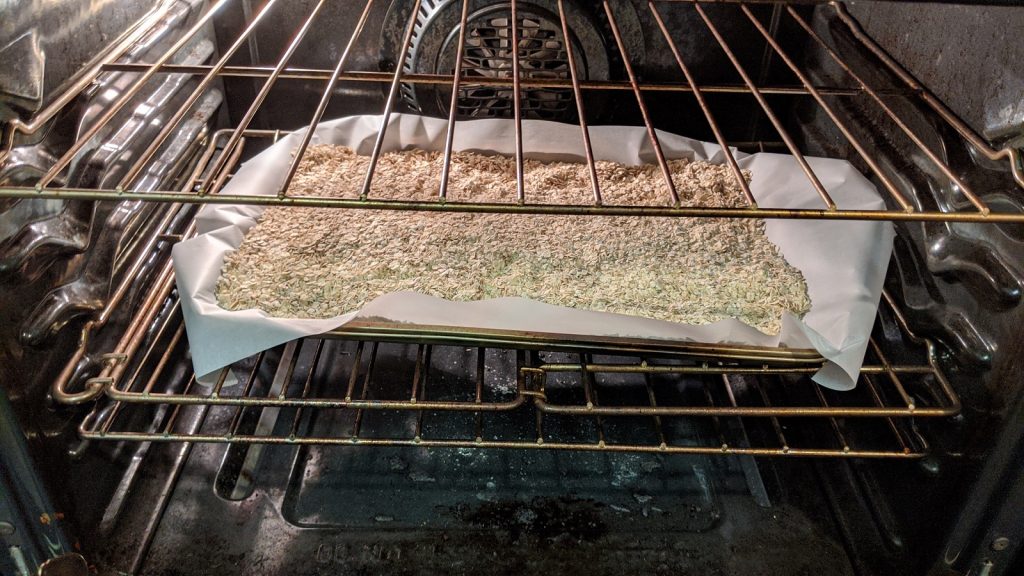
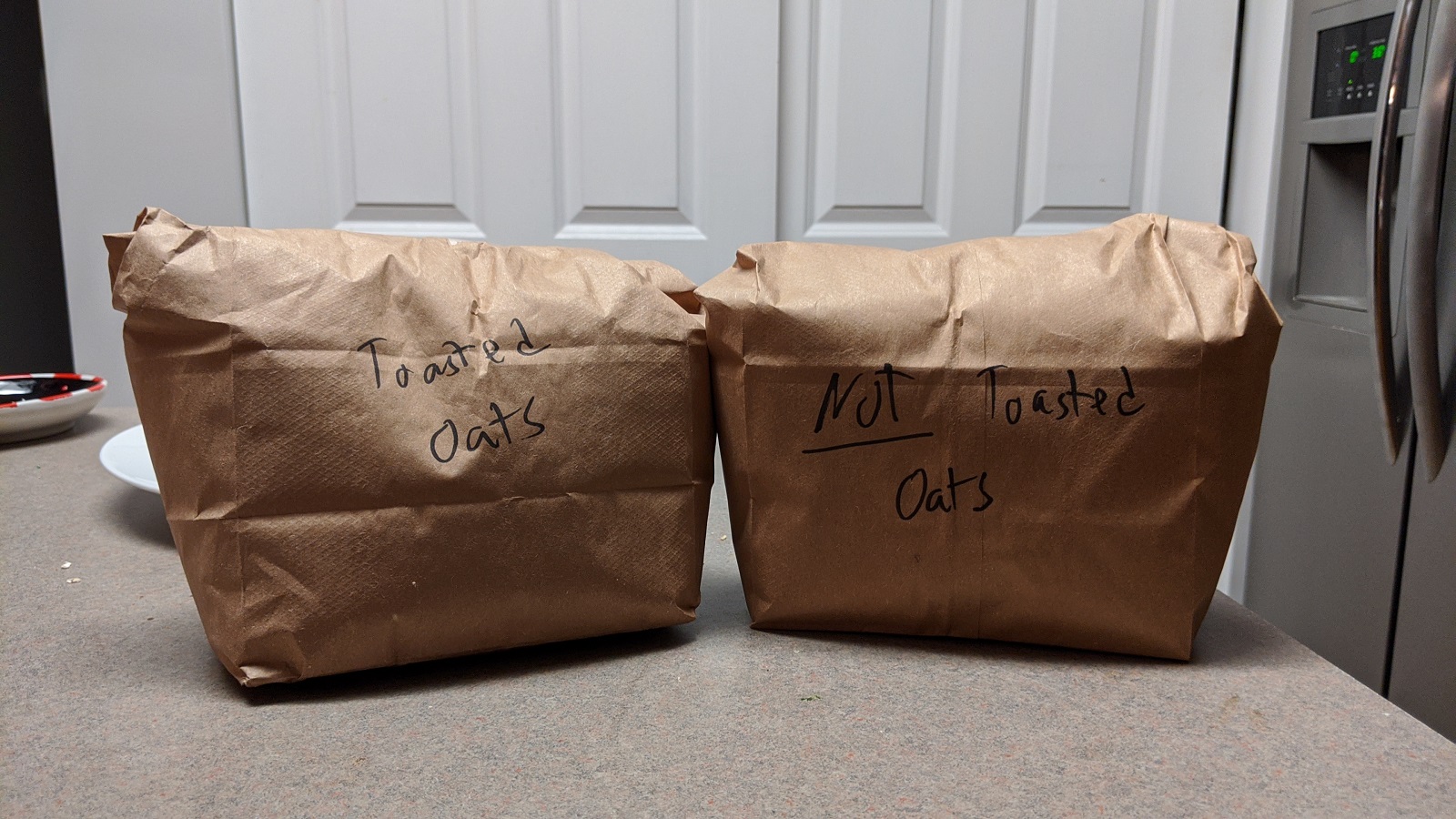


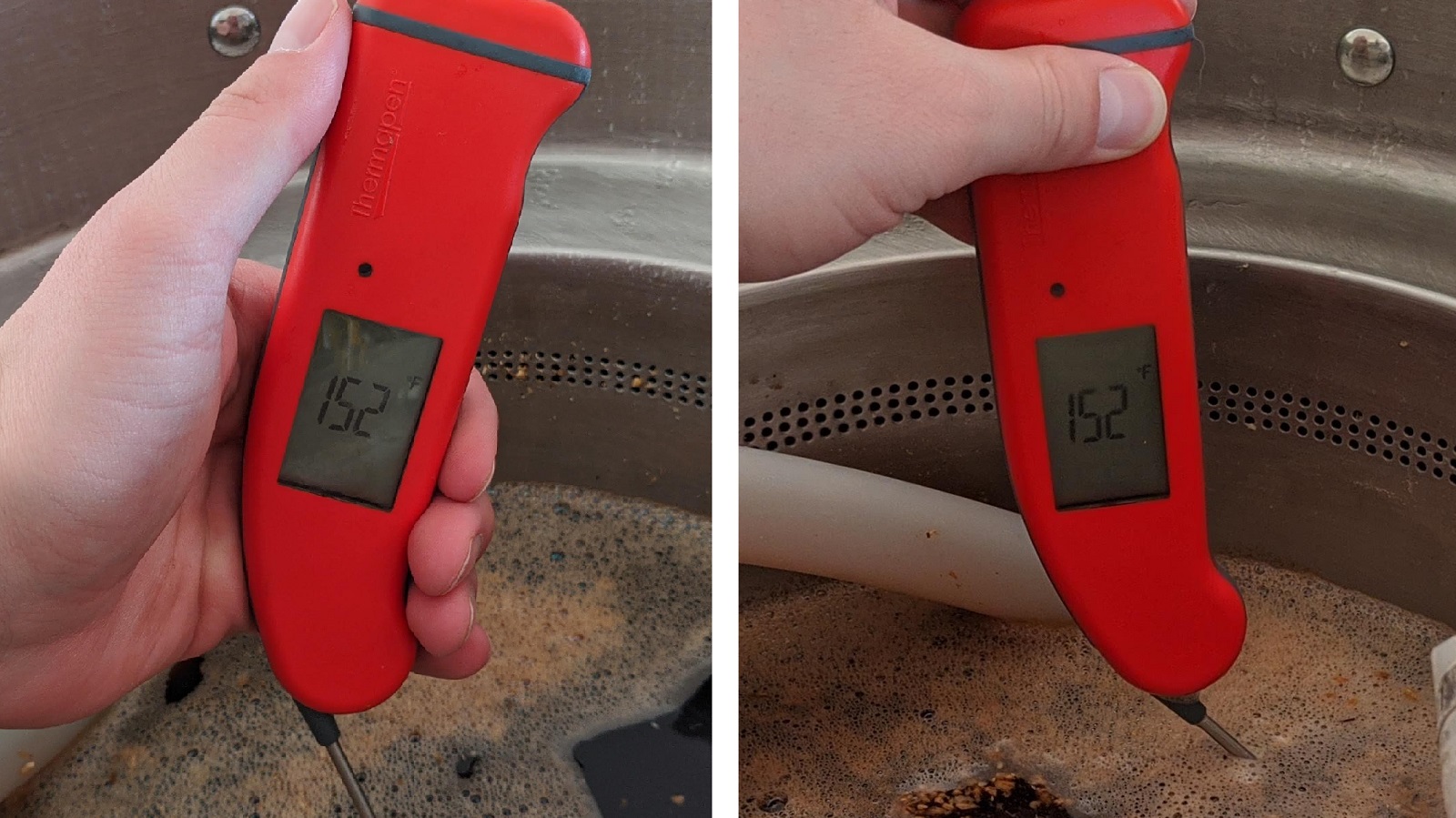
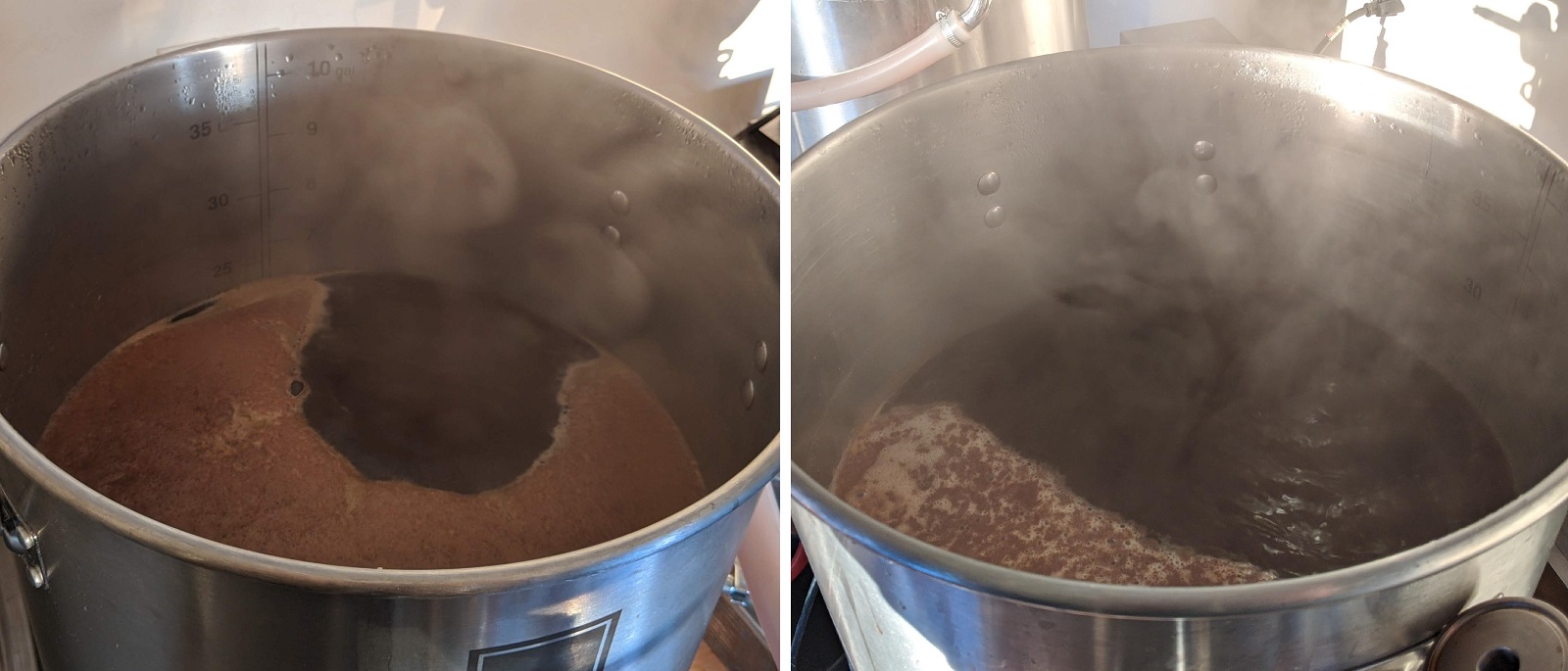
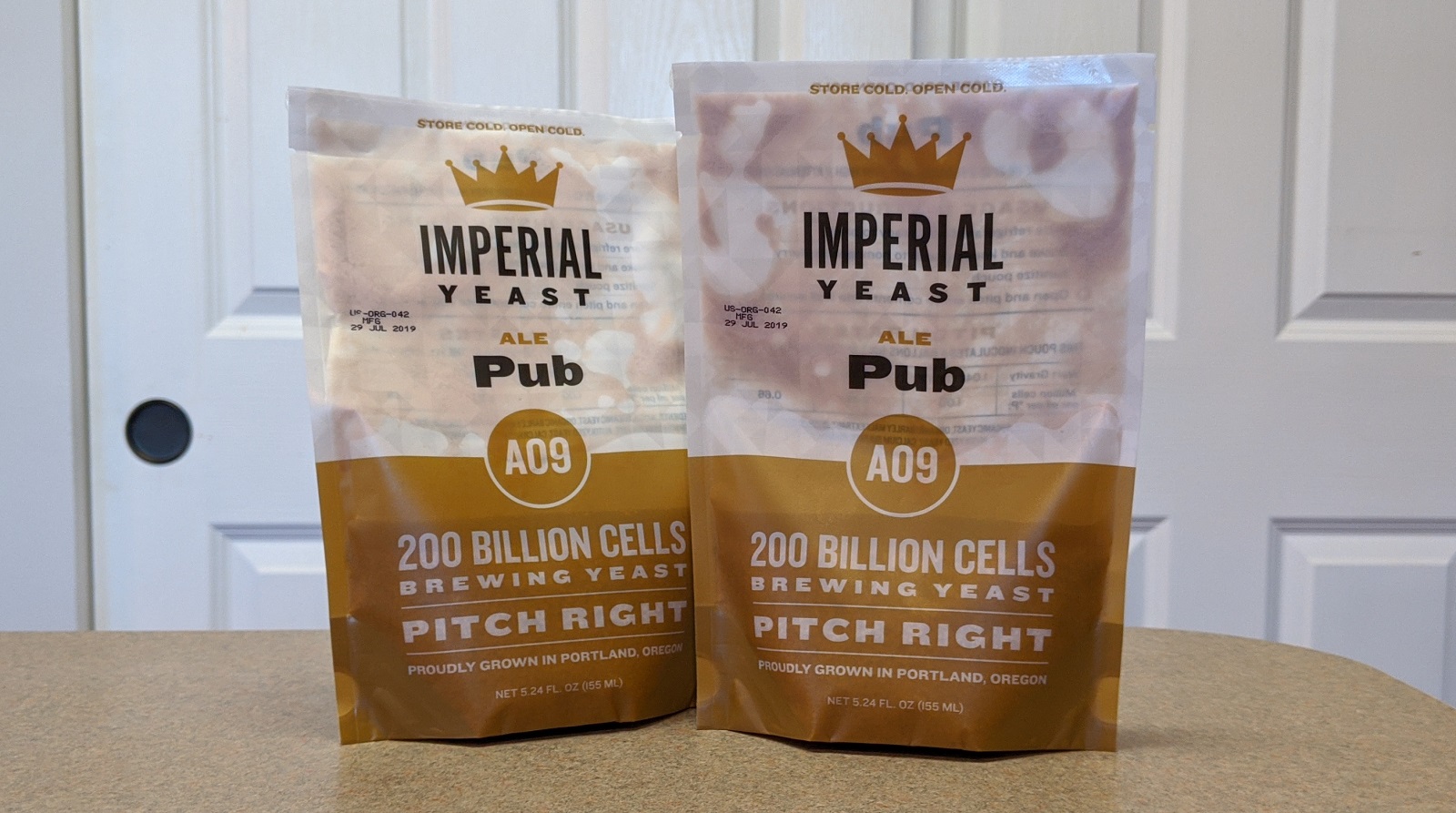
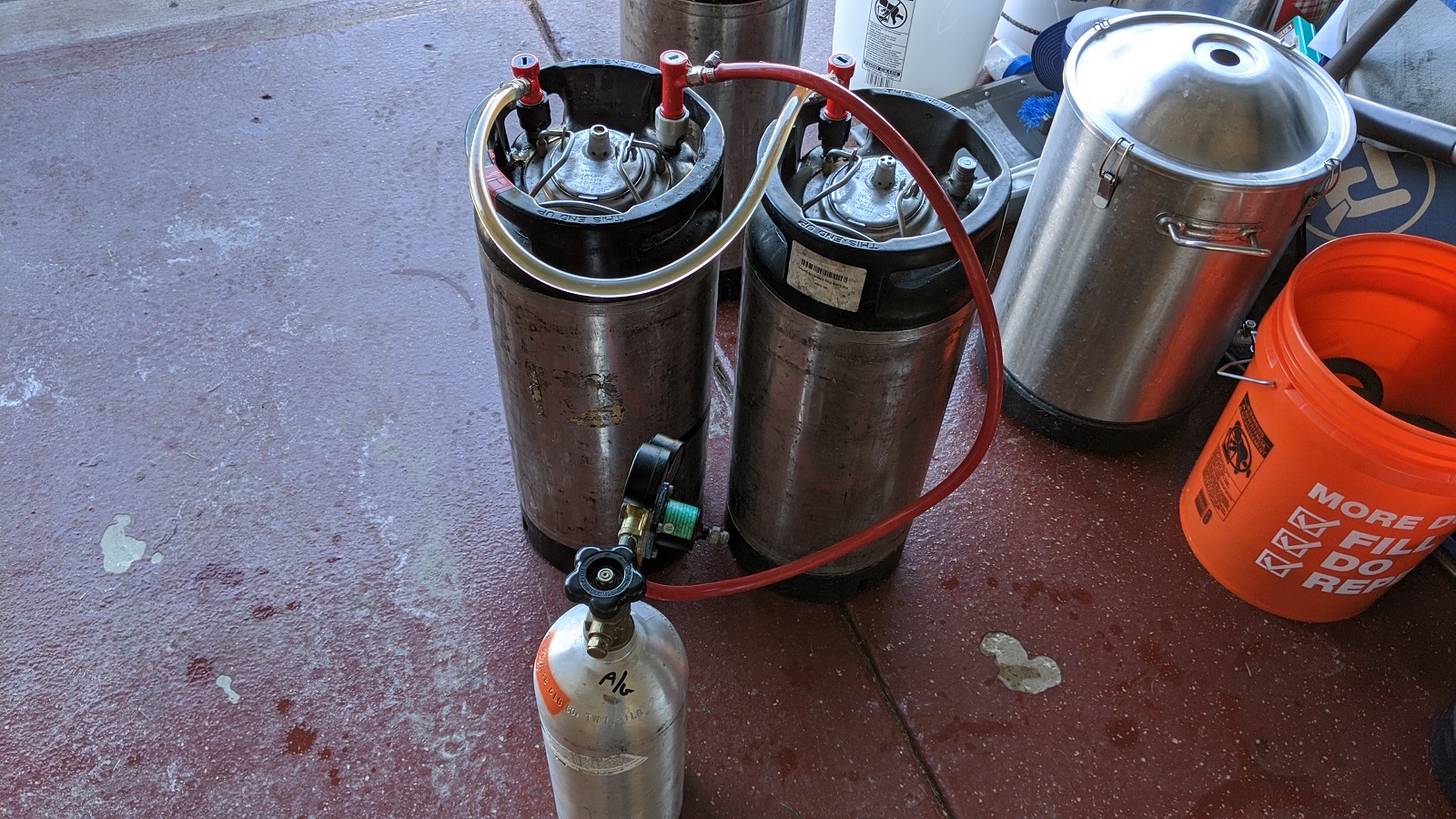
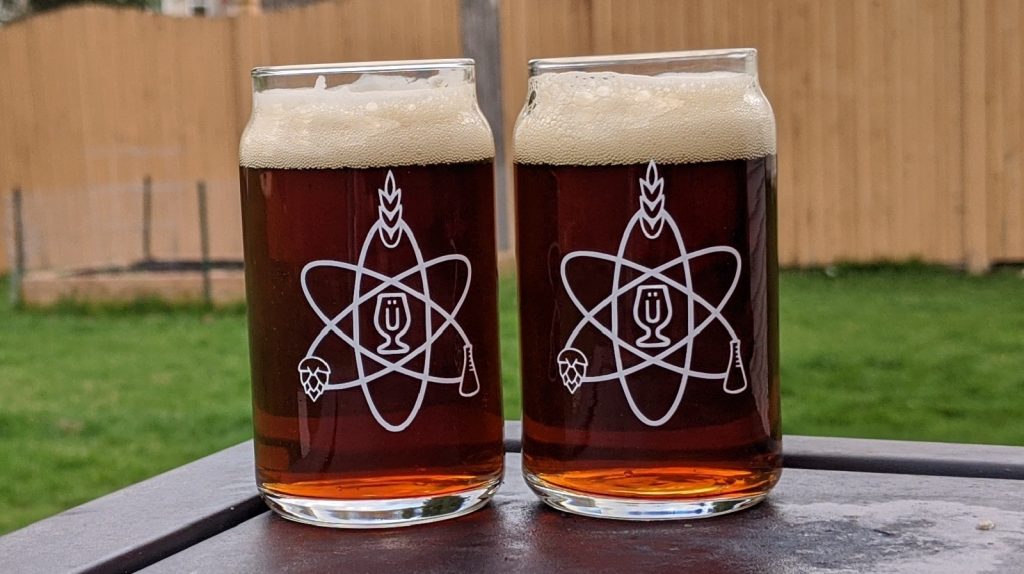










23 thoughts on “exBEERiment | Impact Toasting Flaked Oats Has On British Brown Ale”
What about the flaking process causes enzyme denaturation? Are they doing more than just flattening the oat kernel (is it a “corn”? Or a “groat”?)
Yes, I think they have to steam the grains in order to roll them, otherwise the grains just crack/shatter/pulverise.
Besides denaturing the enzymes, the steam hydrates/gelatinizes the starch, which is why rolled grains don’t need a cereal mash, and why they cook up so much faster than “steel-cut” grains for breakfast.
Matt, thanks for this experiment!
Did you weigh equal quantities of oats before toasting or after? If after, then I am thinking the toasted oat batch actually received more oats (due to those oats carrying less water weight), which alone might be responsible for the perceptual difference.
Hey Lee, both! And actually the toasting didn’t change the weight enough for my scale to (.01 lb granularity, I believe) pick it up. I’d imagine water content of the oats was negligible.
Cool, thank you for your thoroughness!
Did you choose which one you preferred knowing it was the untoasted, or someone else did the cup marking so you were blind to that as well?
Rice hulls? hard to believe you could get flow with that much flaked product
No rice hulls on this one, if I wasn’t single vessel I definitely would have been more worried about it. It was a slow drain, but a drain nonetheless.
Along the lines of what Smschaf is talking about, a while back I asked about benefits of toasting oats. Regarding your answer, did you notice a difference in drain rate between the toasted and untoasted?
Nice one Matt. It’s a shame more people couldn’t have tried this one out. I would have liked to see if more people would’ve picked up the difference with only one shot at the triangle. As far as the oat lager….I tried a rye pilsner before. It did not come out well lol. I was new to lager brewing so that might have had a lot to do with it but give it a shot for sure. Mine was definitely a dumper.
What’s the reason for leaving them to sit for 3 weeks? In baking I normally use them right away
I’m guessing the 3 week rest is from Moshers radical brewing in the section that talks about roasting your own grain. I have roasted my own oats and barley. I would say the rest is a must with the barley, but not necessary with the oats. The barley had a noticeable burn’t like astringent character when I roasted it, the longer it was roasted the more prominent that character was. It dissipated over time and I would say 3 weeks is a bit on the conservative side but works well. Oats on the other hand are very tasty right out of the oven, I imagine if you toast them for long enough you could get some harsh character but I have found it not necessary to “rest” them and usually toast them the night before. These have been my observations so take them with a grain of salt. As a side note I would highly recommend playing around with toasting your own barley as I produced some very unique beers that way and it was a fun learning experience.
Thanks for the write up.
Just curious, do you know the order for which of your tests were correct/incorrect? What I’m wondering is whether you “learned” to detect the difference over time/with practice..
I really like your experiments they are well documented and really easy to follow and understand unlike many others i see on the internet so thank you for your dedication. How about a trial of toasted vs un toasted coconut? i usually use toasted for a porter that i have been doing for some time but i am wondering if there is any benefit to toasting. Am i just making more work for myself or does the toasting inhibit the amount of oil being infused in the brew? Thanks again for your great insights.
Thanks for another great xBmt! I brew an Oatmeal Brown that is similar to this as one of my “house” beers a couple times a year. I haven’t tried toasting my oats, but I’ll probably give it a try this fall when I brew it with some vanilla. I’m glad that it’s worth the effort!
I feel like that toasty cookie flavour sounds like it would be absolutely beautiful in a milk stout… maybe with some raisins as well? is that too much?!
I’m just getting back into brewing beer after many years so this has intrigued me. I’m starting again with kits, would the addition of oats to a starter brew make any difference or would it have to be a proper mash?
Hello! If its no bother, may I ask what type of statistical test you use? is it binomial distribution? I am doing a similar project for my university where I interview 5 subjects about the same porter aged at two different temperatures for two weeks.
This is very interesting Matt, thanks!
I recently brewed a Cream Ale with a vanilla infusion and some extra hops to balance sweetness from the vanilla, the cookie-like flavor that you mentioned actually sounds like an interesting addition to this beer’s character, although the color might not be one of a Cream Ale any more.
We’ll see what happens! Cheers!
Enjoyed the podcast for this xbmt. I am wondering if the same could be done for flaked barley? Could be an interesting way to give my Irish Dry Stout some more character
Great idea!
Thanks for doing this exbeeriment. This recipe was delicious